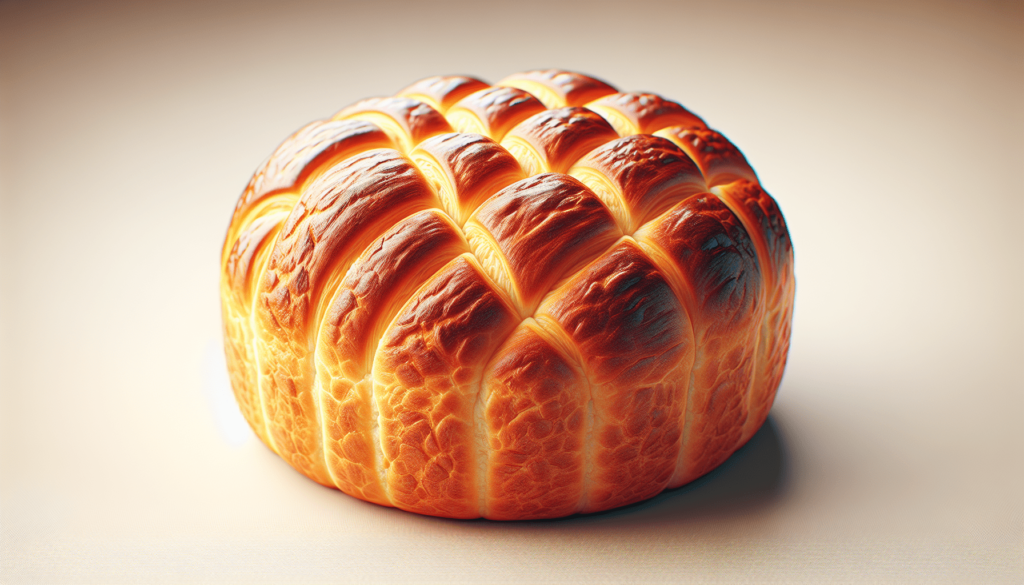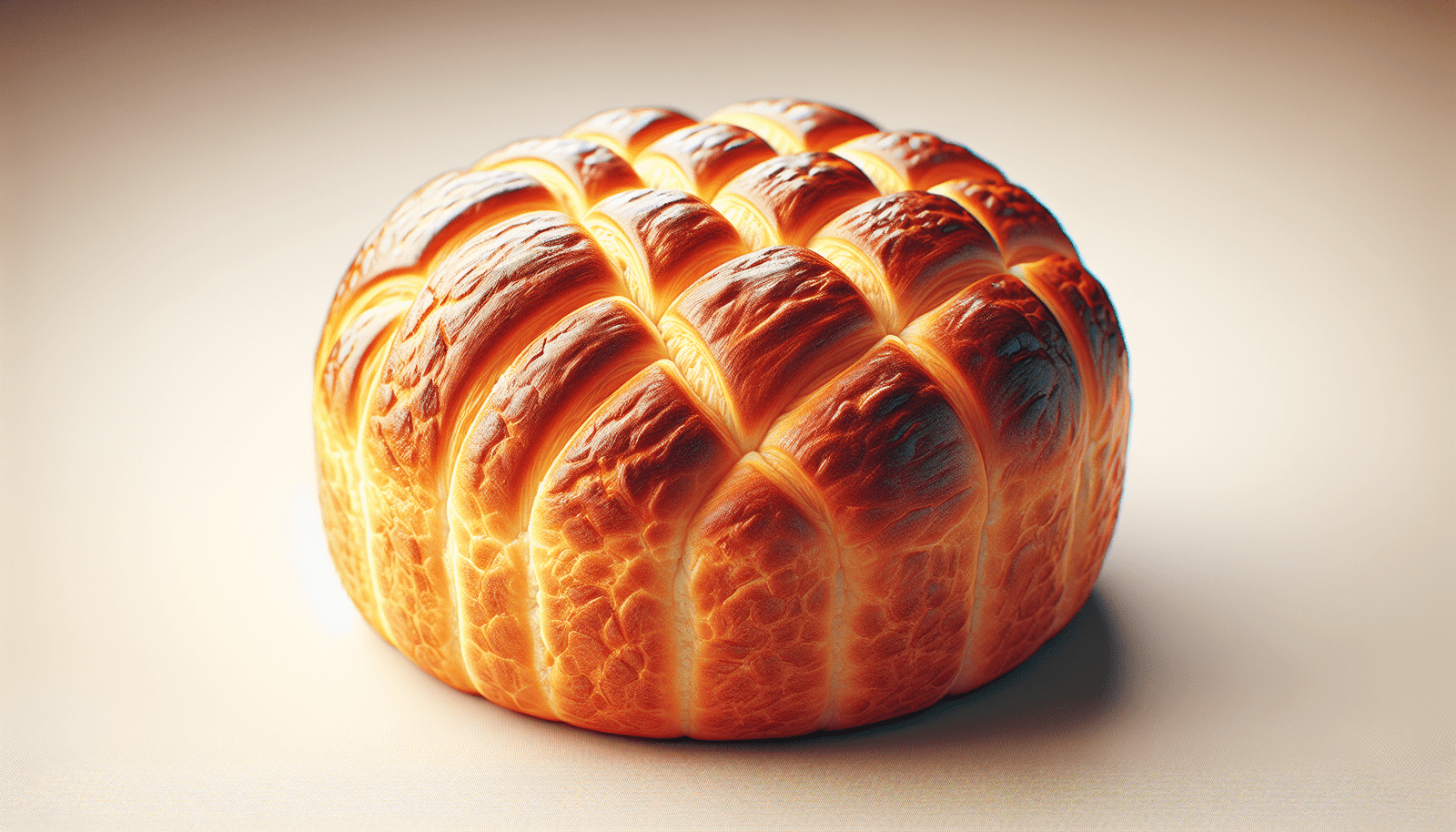Craving a unique and delicious bread experience? Look no further than the Japanese Rice Bread Recipe. This mouthwatering recipe combines the soft and fluffy texture of traditional Japanese rice with the comforting taste of freshly baked bread. With simple ingredients and easy instructions, you’ll be able to create a delectable treat that will leave everyone asking for seconds. Get ready to embark on a culinary adventure that brings together the best of both worlds.
Ingredients
To make Japanese rice bread, you will need the following ingredients:
Cooked Japanese rice
Start by cooking the rice according to the package instructions. It is important to use Japanese rice for this recipe as it has a sticky texture that enhances the bread’s consistency.
Water
You will need water to activate the yeast and mix the dough. Make sure the water is at a warm temperature, around 110°F (43°C), to help the yeast activate properly.
Yeast
Yeast is an essential ingredient in bread-making as it helps the dough rise. It is important to ensure that your yeast is fresh and active. To activate the yeast, you will mix it with a small amount of warm water and sugar before adding it to the dry ingredients.
Sugar
Sugar is used to activate the yeast and provide food for it to ferment. It adds sweetness to the bread and helps with the flavor development.
Salt
Salt enhances the overall taste of the bread and helps to balance the sweetness from the sugar. It also helps with gluten development and prevents the dough from becoming too sticky.
Bread flour
Bread flour is the preferred flour for making Japanese rice bread as it has a higher protein content than all-purpose flour. This protein is necessary to create gluten, which gives the bread its structure and texture.
Vegetable oil
Vegetable oil is used to keep the dough moist and prevent it from sticking to surfaces during the preparation process.
Preparation
Now that you have gathered all the necessary ingredients, it’s time to start the preparation process. Follow these steps to make delicious Japanese rice bread:
Activate the yeast
In a small bowl, combine the yeast with a teaspoon of sugar and warm water. Stir gently and let it sit for about 5 minutes until it becomes frothy. This frothiness indicates that the yeast is active and ready to be used.
Mix the dry ingredients
In a large mixing bowl, combine the bread flour, sugar, and salt. Mix them together until well combined. These dry ingredients will provide the base flavor for your bread.
Combine rice and water
In a separate bowl, mix together the cooked Japanese rice and water. Stir until the mixture becomes slightly sticky. This step helps to incorporate the rice into the dough and gives the bread its unique texture.
Mix the dough
Add the activated yeast mixture to the dry ingredients. Then gradually incorporate the rice-water mixture into the bowl. Mix everything together until a sticky dough forms. The dough should be soft and pliable but not overly sticky.
Knead the dough
Transfer the dough onto a lightly floured surface and knead it for about 10 minutes. Kneading helps to develop gluten in the dough, which gives the bread its structure. Be careful not to over-knead the dough, as this can make the bread dense and tough.
Let the dough rise
Place the dough in a greased bowl, cover it with a clean cloth, and let it rise in a warm environment for about 1 to 1.5 hours. The warmth will provide the ideal conditions for the yeast to ferment and the dough to double in size.
Shape the dough
Once the dough has risen, gently punch it down to release any air bubbles. Then, shape it into your desired bread form. You can make a loaf, rolls, or even buns. Be creative and have fun with different shapes!
Let it rise again
Place your shaped dough onto a baking sheet or a greased loaf pan. Cover it with a cloth and let it rise for another 30 to 45 minutes. This second rise helps to further develop the flavor and texture of the bread.
Bake the bread
Preheat your oven to 375°F (190°C). Once the dough has finished its second rise, place it in the oven and bake for approximately 25 to 30 minutes, or until the bread is golden brown and sounds hollow when tapped on the bottom. Adjust the baking time accordingly if you are making smaller rolls or buns.
Cool and serve
Once your bread is baked, remove it from the oven and let it cool on a wire rack. It is important to allow the bread to cool completely before slicing to ensure that it retains its moisture and texture. Once cooled, slice and enjoy your homemade Japanese rice bread!

Tips for Success
To ensure the best results when making Japanese rice bread, follow these helpful tips:
Use sticky rice for better texture
Using sticky, short-grain Japanese rice will give your bread a wonderful chewy texture. This type of rice has a higher starch content, which adds moisture and richness to the bread.
Ensure the yeast is active
Proper activation of the yeast is crucial for the success of your bread. Make sure the water you use to activate the yeast is at the right temperature (around 110°F) and that the yeast becomes frothy. If it doesn’t, your yeast may be expired or the water may be too hot or too cold.
Let the dough rise in a warm environment
Yeast thrives in a warm environment, so it is important to let your dough rise in a place that is not too cold. You can create a warm environment by placing the covered dough near a warm oven or on top of a heating pad set to a low temperature.
Avoid over-kneading the dough
Kneading the dough is necessary to develop gluten, but over-kneading can make the bread tough and dense. After about 10 minutes of kneading, stop and check the dough’s consistency. It should be smooth, elastic, and slightly sticky.
Preheat the oven before baking
To ensure even baking and proper rising of the dough, make sure to preheat your oven before placing the bread inside. This will help the bread achieve a beautiful golden brown color and a nice crust.
Allow the bread to cool completely before slicing
Although it may be tempting to slice into the freshly baked bread, it is important to let it cool completely on a wire rack. This allows the bread to set and retain its moisture. Slicing it too soon can result in a gummy or dry texture.
Variations
Japanese rice bread is incredibly versatile, and you can experiment with different flavors and additions. Here are a few variations to try:
Add fillings such as cheese or ham
For a savory twist, add fillings like cheese or ham to your bread dough before shaping it. This creates a delicious, gooey center when baked.
Make it sweet with raisins and cinnamon
If you prefer a sweeter bread, incorporate raisins and cinnamon into the dough. The flavors will infuse the bread, making it perfect for breakfast or as a snack.
Add herbs like rosemary or thyme for a savory flavor
For a burst of herbaceous flavor, mix in chopped fresh herbs like rosemary or thyme. These herbs pair well with savory fillings or can be enjoyed on their own.
Try different shapes like rolls or buns
Instead of making a traditional loaf, experiment with different shapes like rolls or buns. These smaller portions are great for individual servings or as finger foods for parties.

Serving Suggestions
Once your Japanese rice bread is ready, there are numerous ways to enjoy it. Here are some serving suggestions:
Spread with butter or jam
A classic way to enjoy freshly baked bread is by spreading it with butter or your favorite jam. The simplicity of this combination allows the flavors of the bread to shine.
Use for sandwiches
Japanese rice bread makes an excellent base for sandwiches. Its soft texture and slightly sweet taste pair perfectly with both savory fillings, like sliced deli meats and cheese, or your favorite vegetarian options.
Serve alongside soup or salad
For a complete meal, serve your bread alongside a warm bowl of soup or a refreshing salad. The bread’s chewy texture complements the comforting warmth of soup and adds a delightful element to any salad.
Toast and enjoy as a breakfast item
Start your day off right by toasting a slice of Japanese rice bread and enjoying it with a cup of hot coffee or tea. The toasting brings out the bread’s natural sweetness and adds a crunchy texture.
Storage
To ensure the freshness and longevity of your Japanese rice bread, follow these storage guidelines:
Keep in an airtight container at room temperature
If you plan to consume the bread within a few days, store it in an airtight container at room temperature. This will help maintain its moisture and prevent it from drying out.
Refrigerate for longer shelf life
If you want the bread to stay fresh for a longer period, you can also store it in the refrigerator. Place it in a plastic bag or wrap it in aluminum foil to prevent it from absorbing any odors.
Freeze for future use
To extend the storage life of your bread even further, you can freeze it. Slice the bread and wrap each slice tightly in plastic wrap or place the whole loaf in a freezer bag. When ready to enjoy, simply thaw the slices at room temperature or toast them straight from the freezer for a quick and easy snack.
Health Benefits
Japanese rice bread offers some health benefits that make it a great alternative to regular bread:
Gluten-free alternative to regular bread
For individuals with gluten sensitivities or celiac disease, Japanese rice bread provides a gluten-free option. By using rice flour instead of wheat flour, you can enjoy the flavors and textures of bread without any gluten-related concerns.
Rich in carbohydrates for energy
Rice is a great source of carbohydrates, which are the body’s primary fuel source. Japanese rice bread provides a delicious and energizing option to fuel your daily activities.
Low in fat
Compared to some other bread varieties, Japanese rice bread tends to be lower in fat. This can be beneficial for individuals who are watching their fat intake or trying to maintain a healthy diet.
Good source of fiber
Rice is naturally high in fiber, which aids in digestion and helps maintain a healthy gut. By using rice flour in your bread, you can enjoy the benefits of fiber without sacrificing taste or texture.
Cultural Significance
Japanese rice is a staple in Japanese cuisine, and rice bread is a unique twist on traditional bread. It offers a fusion of flavors and textures that perfectly encapsulates the creativity of Japanese culinary culture. Rice bread can be found in bakeries and cafes throughout Japan, showcasing its popularity and cultural significance.
History
Japanese rice bread originated in Japan in the early 20th century. It gained popularity due to its unique texture and flavor, which set it apart from traditional bread made with wheat flour. In its early years, rice bread was predominantly steamed rather than baked, reflecting the traditional cooking methods of Japanese cuisine.
Conclusion
Japanese rice bread is a delicious and versatile alternative to regular bread. With its sticky texture and slight sweetness, it provides a unique flavor profile that can elevate any meal or snack. The simple ingredients and easy preparation make it accessible even to novice bakers. So why not give it a try? Experiment with different flavors, shapes, and serving suggestions until you find your favorite variation. Whether you enjoy it with butter and jam, as a sandwich, or alongside a bowl of soup, Japanese rice bread is sure to impress and satisfy.


